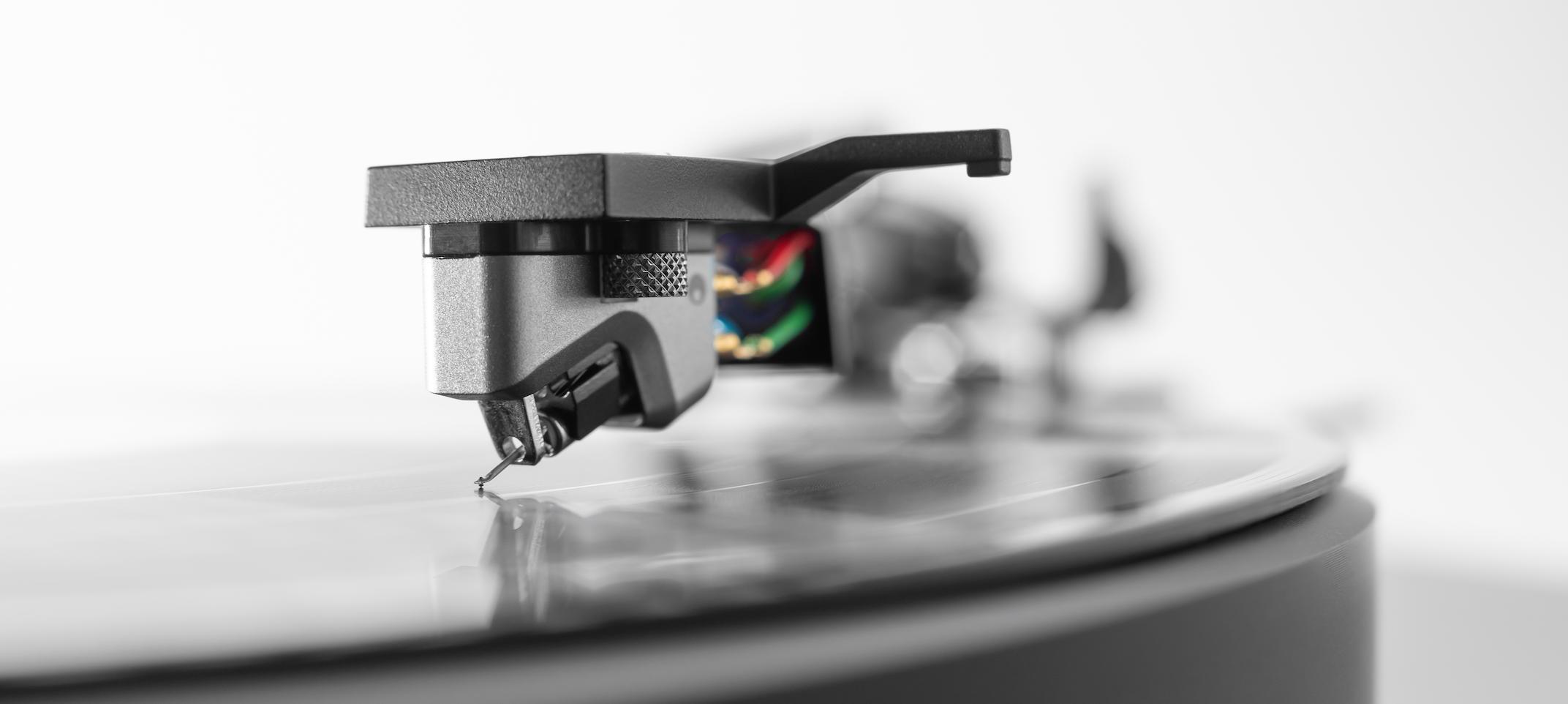Cartridges 101 - An Introduction to Phono Cartridges

In straightforward language, turntables function by moving a small diamond (the stylus) through a record's grooves, generating vibrations. The cartridge's role is to transform those vibrations into pleasing analog sound. Since records hold a significant amount of musical data, it's logical that the cartridge quality greatly influences the sound quality. And there are two basic types—Moving Magnet & Moving Coil. Let’s take a look at what they are and how they’re different.

Moving Magnet (MM) Cartridges
Inside a moving magnet turntable cartridge, a tiny magnet is housed within the stylus. On both sides of the magnet, there are two sets of stationary coils. As the stylus traces the record grooves, the magnet shifts between the coils, generating a small electrical current. This magnetic field or signal is then connected to the phono stage— the device that amplifies the signal, which is either built-in to the table, or is a separate component. Once amplified, and sent through a separate power amp, you get the music through your speakers.
Moving Magnet cartridges tend to be the most common. In large part because they are usually lower cost and are more durable, requiring less maintenance. You might say they are the standard, and are often included when you purchase a turntable. However, and this is somewhat subjective, they are not considered to produce the level of sound quality that Moving Coil cartridges produce. Mainly because they are not as sensitive to the microscopic grooves in the record and therefore some of the extreme detail in the recording is not picked up. That said, Moving Magnet cartridges, like most HiFi gear, are always improving, and some would argue the sound quality gap between MM and MC cartridges has decreased significantly and is only noticeable by the most discerning listeners.
Moving Coil (MC) Cartridges
Instead of employing a moving magnet, moving coil cartridges produce the signal through the motion of coils. In this type, there is a fixed magnet surrounded by vibrating coils, making it structurally opposite to a moving magnet cartridge. As the stylus senses vibrations from the record grooves, the coils respond by converting this movement into an electrical signal which is then amplified by the phono stage.
Moving Coil cartridges are highly sensitive and are able to pick up the micro details in the record, and thus the recording. Which is why they tend to be preferred by audio enthusiasts who want to hear everything—every little last bit of nuance in the music. “Who wouldn’t want to hear all that detail?” you might be asking. Well, a lot of people. But not everyone has access to the ultra high performance amplifiers and speakers it takes to bring forth that level of detail. In short, if you don’t have a high end, highly resolving system, you are likely not utilizing all a Moving Coil cartridge has to offer. Furthermore, because they are delicate, finely made precision pieces, they are more costly to make and require a lot more care and maintenance.
A Word About Stylus and Their Different Shapes
The configuration of the stylus plays a crucial role in its interaction with the record groove. A narrower contact radius enhances the stylus's ability to navigate modulations in the groove. The main stylus shapes are Conical, Elliptical, Line Contact (which include Special Line, Shibata, & Microline).

Conical
A conical stylus, often referred to as a spherical stylus, is the most commonly used shape due to its simplicity and cost-effectiveness. With a slightly rounded end, it can capture a considerable amount of information from a record groove, although it may miss some nuanced details. The Audio Technica AT-VM95SP is designed to play 78 RPM records.
Elliptical
Moving up the hierarchy, an elliptical stylus boasts a sharper tip angle, enabling more accurate groove tracking, resulting in enhanced detail and reduced distortion. The Ortofon 2M Red provides an affordable upgrade to an elliptical stylus, contributing to its popularity among our customers.
Line Contact
For those seeking optimal high-frequency response and minimal abrasion, the line contact stylus is crafted. However, its strength can turn into a weakness, especially if the records are already worn, as it may amplify surface noise. This design, pioneered by JVC engineer Norio Shibata in 1972, is often labeled as a Shibata stylus on certain cartridges, like the Hana SL.
MicroLine
In the realm of high-end cartridges, the MicroLine™ stylus design is prominent, closely resembling the shape of the cutting head used in record pressing factories. This design allows it to extract information that other styli can't, resulting in exceptionally detailed and accurate sound reproduction. Check out the Audio Technica AT-33PTG.
Important Specifications To Follow
As a turntable novice myself, I found myself confused with all the information out there. I think these four simple specifications will also help you on your journey.
Frequency Response: Typically ranging from 20 to 20,000 Hz, higher-end cartridges extend even further, capturing more detail in both lower and higher frequencies for enhanced audio reproduction.
Stereo Separation: Measured in decibels (dB), a higher value signifies clearer distinction between instruments on the left and right sides of the original recording microphone.
Load Impedance: Though a somewhat intricate specification, the industry standard is 47k ohms. While there's no universally superior or inferior number, specialized cartridges might feature different impedance (cartridge loading).
Tracking Grams: This denotes the manufacturer's recommended setting for the turntable's counterweight.
If you need help choosing a cartridge or have any other turntable related questions feel free to chat with one of our experts.





